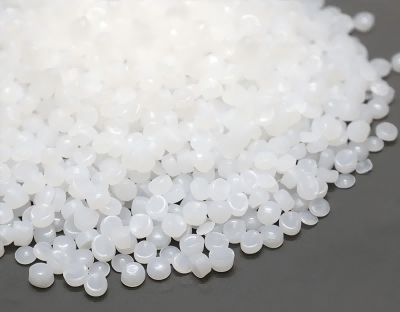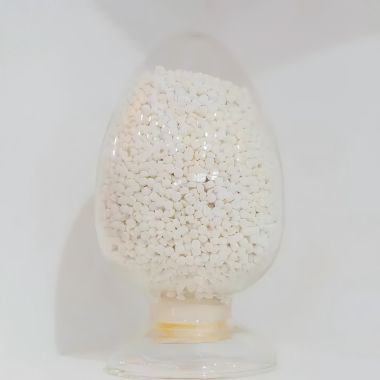The sheath or outer sheath is the outermost protective layer in the optical cable structure, mainly made of PE sheath material and PVC sheath material, and halogen-free flame-retardant sheath material and electric tracking resistant sheath material are used in special occasions.
1. PE sheath material
PE is the abbreviation of polyethylene, which is a polymer compound formed by the polymerization of ethylene. The black polyethylene sheath material is made by uniformly mixing and granulating polyethylene resin with stabilizer, carbon black, antioxidant and plasticizer in a certain proportion. Polyethylene sheath materials for optical cable sheaths can be divided into low-density polyethylene (LDPE), linear low-density polyethylene (LLDPE), medium-density polyethylene (MDPE) and high-density polyethylene (HDPE) according to density. Due to their different densities and molecular structures, they have different properties. Low-density polyethylene, also known as high-pressure polyethylene, is formed by copolymerization of ethylene at high pressure (above 1500 atmospheres) at 200-300°C with oxygen as a catalyst. Therefore, the molecular chain of low-density polyethylene contains multiple branches of different lengths, with a high degree of chain branching, irregular structure, low crystallinity, and good flexibility and elongation. High-density polyethylene, also known as low-pressure polyethylene, is formed by polymerization of ethylene at low pressure (1-5 atmospheres) and 60-80°C with aluminum and titanium catalysts. Due to the narrow molecular weight distribution of high-density polyethylene and the orderly arrangement of molecules, it has good mechanical properties, good chemical resistance and a wide temperature range of use. Medium-density polyethylene sheath material is made by blending high-density polyethylene and low-density polyethylene in an appropriate proportion, or by polymerizing ethylene monomer and propylene (or the second monomer of 1-butene). Therefore, the performance of medium-density polyethylene is between that of high-density polyethylene and low-density polyethylene, and it has both the flexibility of low-density polyethylene and the excellent wear resistance and tensile strength of high-density polyethylene. Linear low-density polyethylene is polymerized by low-pressure gas phase or solution method with ethylene monomer and 2-olefin. The branching degree of linear low-density polyethylene is between low density and high density, so it has excellent environmental stress cracking resistance. Environmental stress cracking resistance is an extremely important indicator for identifying the quality of PE materials. It refers to the phenomenon that the material test piece subjected to bending stress cracks in the environment of surfactant. Factors affecting material stress cracking include: molecular weight, molecular weight distribution, crystallinity, and microstructure of molecular chain. The larger the molecular weight, the narrower the molecular weight distribution, the more connections between the wafers, the better the environmental stress cracking resistance of the material, and the longer the service life of the material; at the same time, the crystallization of the material also affects this indicator. The lower the crystallinity, the better the environmental stress cracking resistance of the material. The tensile strength and elongation at break of PE materials are another indicator to measure the performance of the material, and can also predict the end point of the material’s use. The carbon content in PE materials can effectively resist the erosion of ultraviolet rays on the material, and antioxidants can effectively improve the antioxidant properties of the material.
2. PVC sheath material
PVC flame retardant material contains chlorine atoms, which will burn in the flame. When burning, it will decompose and release a large amount of corrosive and toxic HCL gas, which will cause secondary harm, but it will extinguish itself when leaving the flame, so it has the characteristic of not spreading flame; at the same time, PVC sheath material has good flexibility and extensibility, and is widely used in indoor optical cables.
3. Halogen-free flame retardant sheath material
Since polyvinyl chloride will produce toxic gases when burning, people have developed a low-smoke, halogen-free, non-toxic, clean flame retardant sheath material, that is, adding inorganic flame retardants Al(OH)3 and Mg(OH)2 to ordinary sheath materials, which will release crystal water when encountering fire and absorb a lot of heat, thereby preventing the temperature of the sheath material from rising and preventing combustion. Since inorganic flame retardants are added to halogen-free flame retardant sheath materials, the conductivity of polymers will increase. At the same time, resins and inorganic flame retardants are completely different two-phase materials. During processing, it is necessary to prevent uneven mixing of flame retardants locally. Inorganic flame retardants should be added in appropriate amounts. If the proportion is too large, the mechanical strength and elongation at break of the material will be greatly reduced. The indicators for evaluating the flame retardant properties of halogen-free flame retardants are oxygen index and smoke concentration. The oxygen index is the minimum oxygen concentration required for the material to maintain balanced combustion in a mixed gas of oxygen and nitrogen. The larger the oxygen index, the better the flame retardant properties of the material. The smoke concentration is calculated by measuring the transmittance of the parallel light beam passing through the smoke generated by the combustion of the material in a certain space and optical path length. The lower the smoke concentration, the lower the smoke emission and the better the material performance.
4. Electric mark resistant sheath material
There are more and more all-media self-supporting optical cable (ADSS) laying in the same tower with high voltage overhead lines in power communication system. In order to overcome the influence of high voltage induction electric field on the cable sheath, people have developed and produced a new electric scar resistant sheath material, the sheath material by strictly controlling the content of carbon black, the size and distribution of carbon black particles, adding special additives to make the sheath material has excellent electric scar resistant performance.
Post time: Aug-26-2024



